The best plants for axolotl tanks may include java fern, anubias, java moss, and Elodea. If you choose inappropriate live plants for the axolotl tank, they may decompose and cause a spike in levels of chemicals such as ammonia. Exposing your amphibian pet to toxic elements may burn it and even cause death.
Can you put fake plants in axolotl tanks?
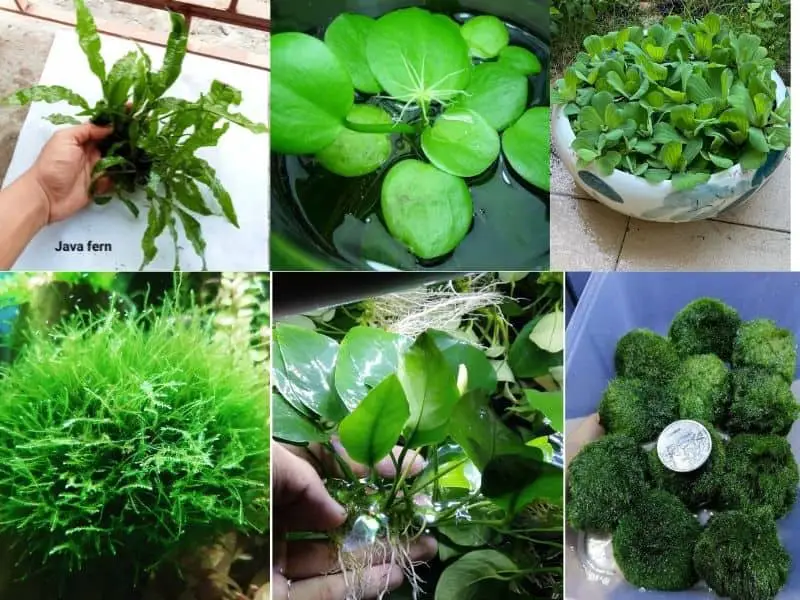
You can put fake or artificial plants in axolotl tanks since they often appear real and are not costly to purchase and maintain. You put the fake plants into the tank and leave them there.
However, artificial plants will not blend into your aquarium’s biological filtering system and oxygenate the water for your pet.
11 safe plants for axolotl tanks
The 11 plants for axolotls provided below can prosper in a cold, low-light watery environment. Also, the plants do not require dozed fertilizer or injection of carbon dioxide.
1. Java Fern
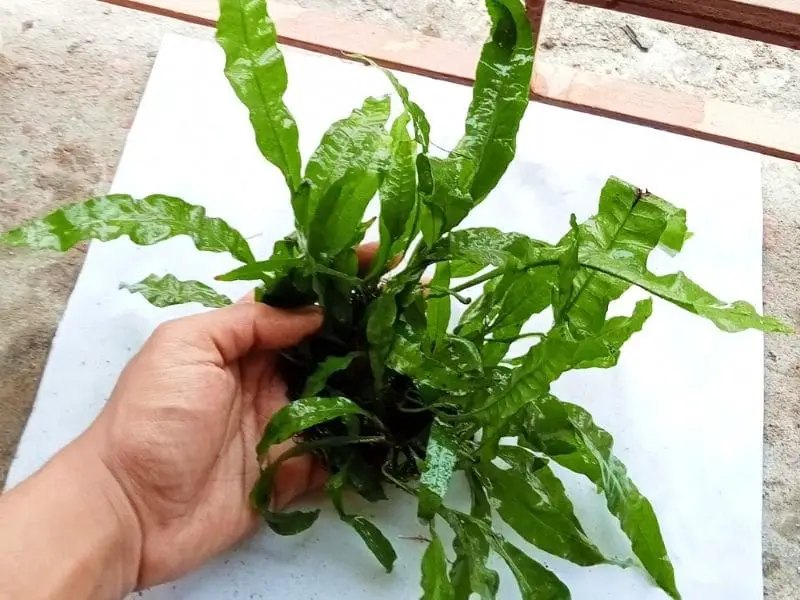
The plant leaves, which are long, thin, soft, and green, provide a perfect spot for axolotl hiding without causing any injury. Aquariums or tanks having a rough surface like driftwood can benefit the leaves since attachment is possible. That helps discourage the digging out of the plant by your amphibian pet.
Although Java Fern prefers growing in the wild, it can also grow with the conditions of an axolotl tank. As a low-light and chilly water plant, Java Fern can be diminutive or reach a height of 16 inches.
| Size and varieties | Benefits |
| 1. Java Fern (12 to 14 inches) 2. Narrow-leaf plant (10 to 12 inches) 3. Java Fern Trident (8 to 10 inches) 4. Java Fern Petite ( 3 to 4 inches) | Easy to grow Prospers in cold conditions Requires low to moderate temperature and lighting Have smooth leaves that do not pose any danger to axolotls |
2. Java Moss

As cold water plants for axolotls, the plants are extremely durable and perform well in different aquatic conditions. You can easily attach the plant to the aquarium, tank rocks, and driftwood to mature without axolotl interference via excavation.
Allowing the plant to float without any interference may cause chaotic entanglements. Use either glue or string or a combination of both to force an attachment with the surfaces provided, to form an elegant forest/swamp in your tank.
Java Moss is excellent for absorbing toxic ammonia, a by-product of the normal body processes of an axolotl.
| Benefits | Size and varieties |
| Easy maintenance Great for low-light and chilly water conditions Promotes water oxygenation and walking surface formation for your axolotls | It has an average size of 3 to 10 inches |
3. Anubias
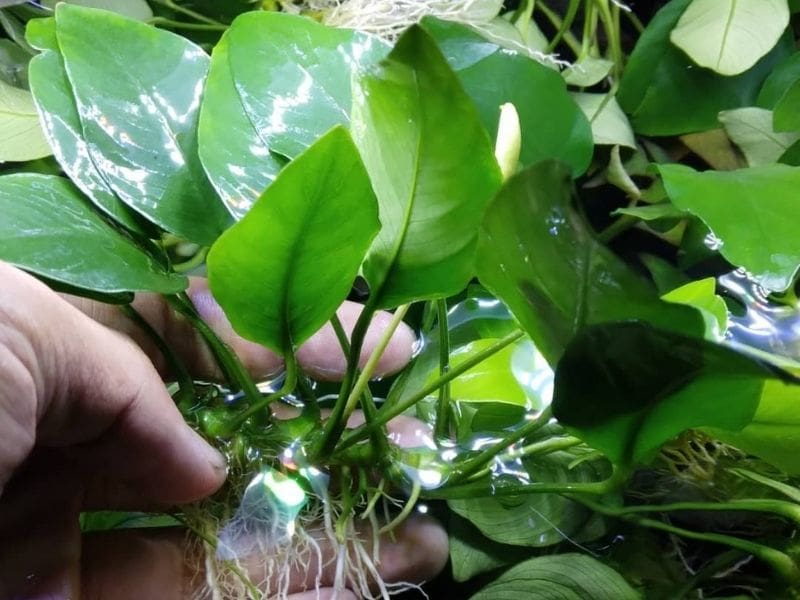
Anubias are exceptionally dependable; they can perform in almost any substrate or tank condition. Providing the most appropriate environment will not hasten the often slow growth of the anubias.
Since the plants find low lights conducive to their growth, always fasten them with hard surfaces such as rocks in the tank.
Anubias Nana is the most preferred species for axolotl tanks. The plants help with oxygenation and filtration of water and come with extensive, dark green, circular leaves to provide the best hiding spot for your aquatic pet.
| Benefits | Sizes and Varieties |
| Easy to take care of the plants Capable of growing on hardy surfaces Requires low to moderate light Assists in water oxygenation | Anubias afzelii and Anubias barteri (over 12 inches) Anubias barteri var. Nana (under 5 inches) Petite Anubias (under 2.5 inches) |
4. Water Lettuce
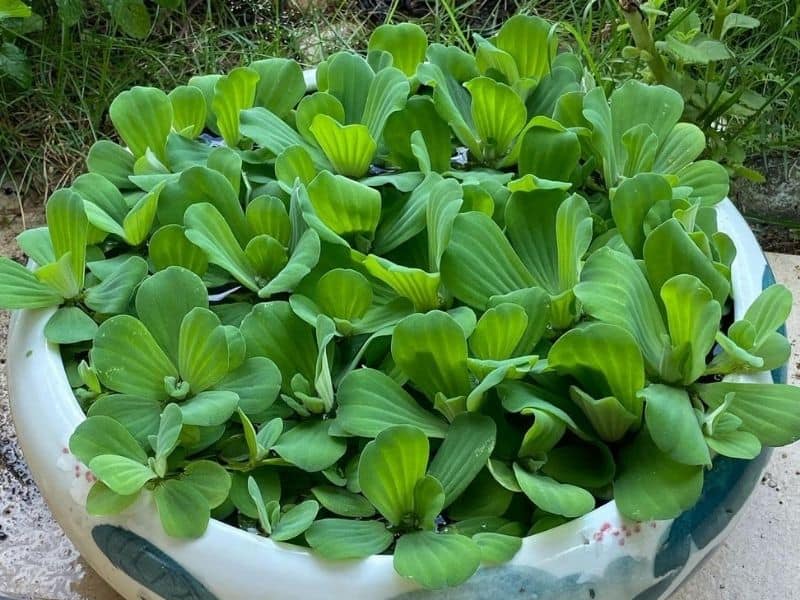
This floating plant tank flourishes in humidity. With the right environment, this axolotl plant can grow expeditiously.
Beginner aquarists may find it challenging to maintain the appropriate tank humidity. Water Lettuce also has draping roots that when maintained appropriately, can establish an entanglement of roots. As a result, your tank’s appearance can be distinctive and fascinating.
Taking care of the plants is stress-free. However, limit the plant’s reproduction so that there is not plenty of it in an axolotl tank.
| Benefits | Sizes and Varieties |
| Moderate light requirement An axolotl cannot uproot it as it floats Consumes decomposition by-products such as nitrites | Maximum size of 10 inches |
READ ALSO: Axolotl Salt Bath Guide – Benefits, Safety + Procedure
5. Amazon Frogbit

The Amazon Frogbit is a floating tank plant that has earned the name “sponge plant” thanks to its numerous sponge-like leaves. The uprooting of the plant by your axolotl is nearly impossible.
The plant is not difficult to maintain, great for amateur axolotl keepers. Additionally, it can function quite well in cold temperatures and low light. Limnobium laevigatum limits the penetration of excess sunlight into the axolotl tank. That’s fantastic for your pet amphibians because they prefer dimly light aquatic environments and live on the bottom.
| Benefits | Sizes and Varieties |
| Unlike a Red Root Floater, it has a neat look Prevents excess penetration of sunlight Easy to maintain | 4 to 6 inches long |
6. Elodea
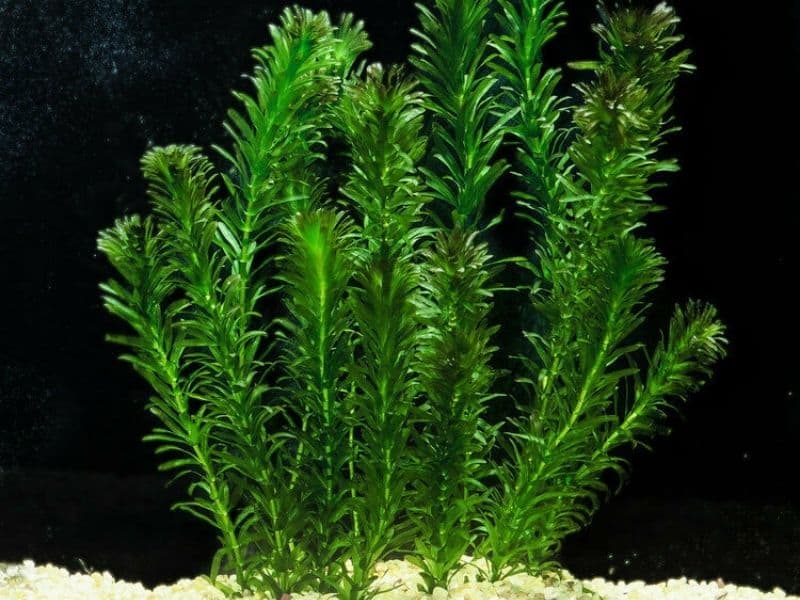
Also called waterweed, Elodea is an interesting axolotl tank plant option. It exists almost completely below the water surface, in low-light conditions, except for its flowers which flourish during warmer periods.
Elodea, also known as waterweed, is an interesting axolotl tank plant. It exists almost completely below the water surface, in low-light conditions, except for its flowers which flourish during warmer periods.
Although plants need plenty of nutrients for survival, their care and maintenance are not too taxing. Elodea plants are more likely to grow larger than other aquarium plants for axolotls; therefore, you will need to prune them frequently.
| Benefits | Size and varieties |
| Beginner-friendly plant Capable of growing in different environmental conditions, particularly low light and chilly waters. Removes contaminants from the water faster due to rapid growth | It can reach 9 to 15 feet. |
7. Hornwort

The free-floating plant is highly resistant to cold and can grow up to a foot high. Nonetheless, the thickness of its stems prevents axolotls from climbing.
Hornwort can also grow as a rooted plant, creating a bushy aquatic environment with enough cover for your axolotls. You can use a tank substrate to hold the plant securely.
Expect your axolotl tank plant to experience rapid growth with the right conditions. Hornwort has a chaotic tank appearance and can shed for up to a month as it adapts to a new habitat.
| Benefits | Size and varieties |
| Can grow as a rooted or floating aquatic plant It provides a nice, bushy appearance Grows faster | Can grow up to 6 feet |
8. Duckweed
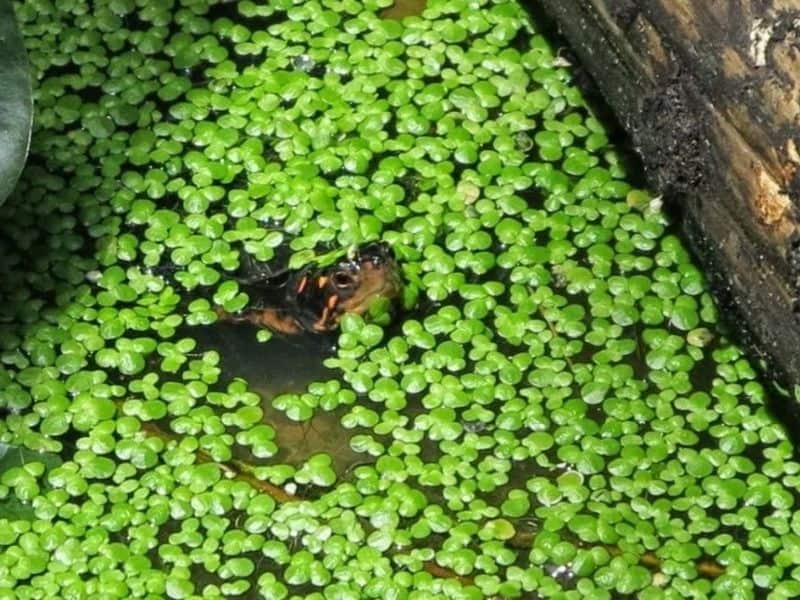
The plant forms a layer of greenish, small plants on the surface of an axolotl tank. That discourages the growth of algae and excess exposure of your pet to sunlight by creating a cool temperature at the tank’s bottom. In addition, duckweed can also help to purify the aquatic environment by absorbing and utilizing carbon dioxide.
Duckweed accumulates faster, and its removal is impossible without damaging your tank. So, before choosing it as your axolotl’s tank plant, consider that.
| Benefits | Sizes and Varieties |
| Low to a high light requirement Fast growth rate It is a floating plant and does not require fastening with a substrate Traps food for your pet | Every pod is about 0.8 inches long |
READ ALSO: Why is My Axolotl Floating? Reasons + What to Do
9. Pothos plant

It can survive in varying axolotl tank environments as a tough floating plant. It is stress-free to keep. To prevent its uprooting by your pet, put its roots inside the tank and keep out its leaves—no need to use a substrate to hold the plant.
The plant delivers quality water via a natural purification mechanism. Pothos can expel harmful toxins and chemicals, such as ammonia, from the axolotl tank. In high levels, ammonia and other chemicals may endanger your pet and erode the biofilter. A spike in ammonia level in the tank or aquarium will make axolotls suffer from ammonia burns, and it can be an invisible killer within only a few days.
| Benefits | Sizes and Varieties |
| Easy to care for Low to a high light requirement It relies on toxic ammonia for its growth | 6-30 feet long |
10. Dracaena Variegatus
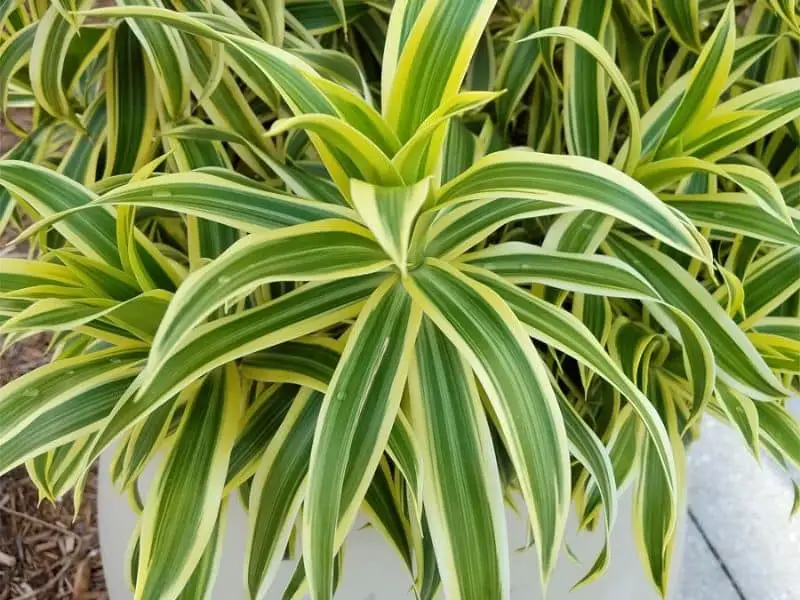
This plant is unique since it is not purely an aquatic plant but more of a land plant. The plants’ natural habitats are areas that frequently floods, such as bogs and marshes.
What’s more, Dracaena Variegatus may be able to survive in environments other than water, such as in a tank. However, the plant may decompose and require replacement if kept underwater for an extended period.
Only use the plant in a tank with an open top to discourage full submersion and ensure proper growth. Alternatively, remove the plants from the tank regularly and leave them exposed to air before returning them
Benefits
- Can adapt and thrive in a tank
Size and varieties
- 12-18 inches
11. Marimo Moss Ball

Your amphibian friend and Marimo Moss Ball prefer chilly conditions, particularly in the lakes found in the North of Europe. The sinking plant is not a moss but a rare round development of chilly water algae.
Marimo Moss Ball grows with no hurry, and thus when the environmental conditions allow, they may be attacked on the surface by nuisance bacteria.
| Benefits | Size and varieties |
| Great for providing dense hiding spots for an axolotl Requires less light It has a unique, beautiful appearance | Can achieve a 2-6 inches diameter |
In conclusion, remember that as long as your aquatic pet is in a perfect watery environment. Fake and live plants have plenty of benefits to your axolotls’ tank by resembling the natural habitat.
READ NEXT: Stressed Axolotl Signs and Help Tips
